Built at a cost of £200 million, Saint Helena Airport connects a remote British Overseas Territory to the rest of the world – but only when the wind isn’t blowing in a certain direction…
At the end of July, a Boeing 757 operated by charter airline Titan Airways landed at Saint Helena, becoming the largest aircraft to ever land at the facility.
This may sound like it shouldn’t be a huge deal, but that is before you consider that the story of the airport is almost as turbulent as the winds which continue to plague it…
Saint Helena
The island of Saint Helena is a very remote volcanic tropical landmass situated in the middle of the South Atlantic Ocean.
The British Overseas Territory lies some 1,210 miles (1,950km) west of the coast of southwestern Africa and 2,500 miles (4,000km) east of Rio de Janeiro on the South American coastline.

This isolation means that getting to the island is somewhat difficult without an airport. Prior to its existence, the only means of travel to and from Saint Helena was via a five-day voyage on a Royal Mail Ship from Cape Town in South Africa.
Airport Ambition
There had been interest in building an airport on the island since the 1940s, when the South African Air Force conducted a survey of Prosperous Bay Plain – an area on the eastern coast of the island. They concluded that while technically feasible, an airport was not a practical proposition.
Between May 1973 and April 1987, UK Civil Aviation Authority (CAA) studies determined that while it would also be feasible to develop a single runway airport on the island, “the costs would be considerable.”
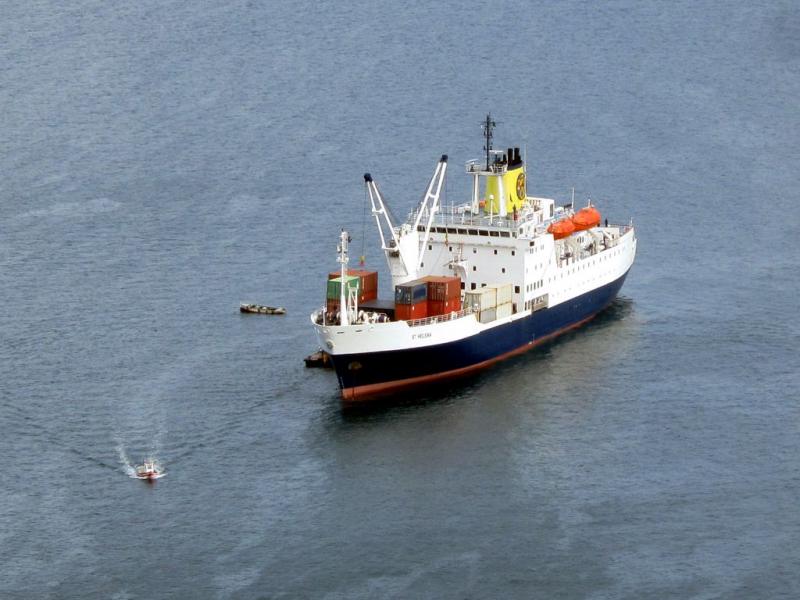
In 2001, research was commissioned to look at the comparative cost of air and sea access to the island. It established that a replacement ship would cost £26.3m, and an airport £38.2m, but suggested that air access represented the best option in the long term.
A referendum was held on St Helena in January 2002 – it concluded that 71.6% of respondents voted in favour of building an airport.
Bidding Battles
The UK Department for International Development (DFID) subsequently agreed to a part publicly funded, and part privately financed development on the understanding that DFID would contribute a maximum of £26.3m – the same cost of a replacement ship.
In March 2005, a ministerial statement in the House of Commons confirmed DFID’s commitment to the development of air access to the island.

Just over a year later, all four of the bidders for the project pulled out over concerns of risk allocation. By November 2007, two news tenders were received from Italian industrial group Impregilo (now called Webuild) and South African construction engineering firm Basil Read.
The process was delayed by the British government, after then-prime minister Gordon Brown insisted on personally reviewing the paperwork.
Impregilo was appointed as the preferred tenderer in October 2008 but in December the same year, the project was paused because of the global economic downturn in that year.
Beginning Construction
On November 4, 2011, Basil Read was awarded the contract to construct an airport on Saint Helena. The first representatives visited the island two weeks later to conduct initial investigations and discussions.
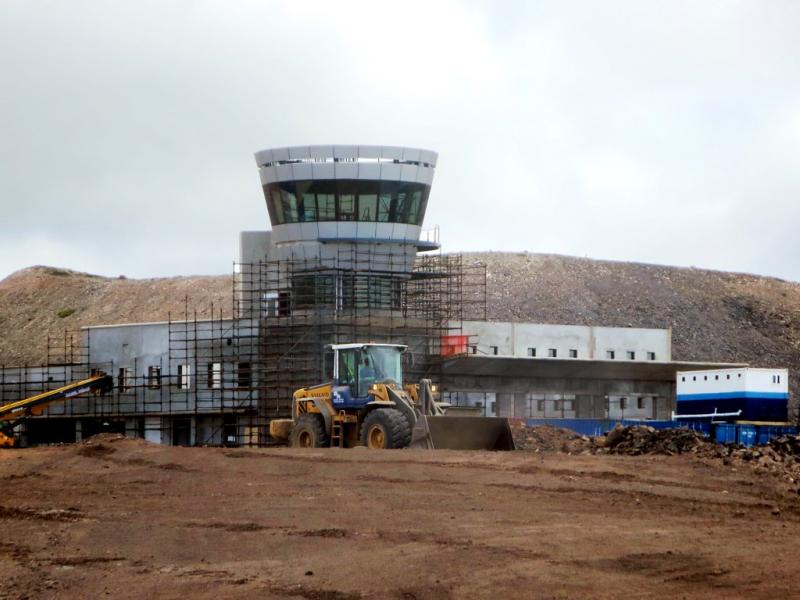
The firm had budgeted approximately £202m for the design and construction. The UK government also granted additional funds of up to £10m in shared-risk contingency, and £35.1m for 10 years of operation by South African airport operator Lanseria Airport.
By the summer of 2015, after just over three years of construction, the airport’s runway was completed.
Weather Woes
The whole process thus far probably felt like an incredibly long-winded one for residents, who in 2005 had been told they’d be getting an airport. More than ten years later in September 2015, the end was nearly in sight as calibration flights for its navigation services took place and the opening was scheduled for February the following year.
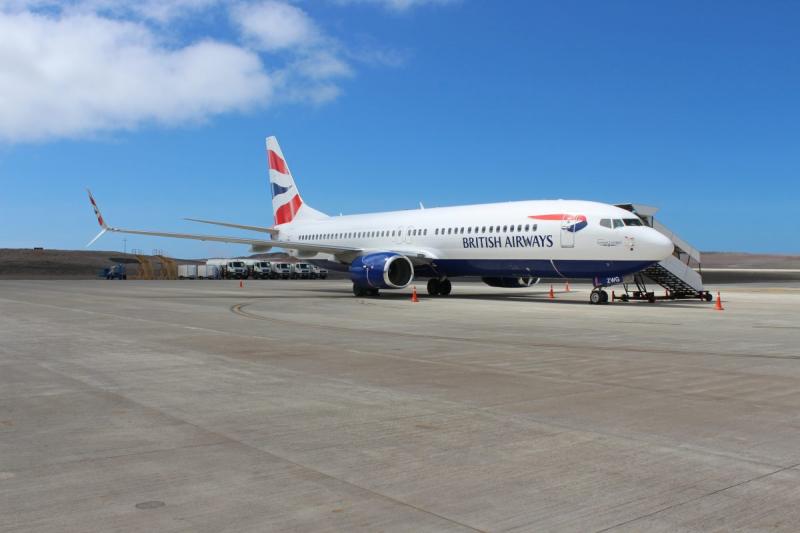
Through surveys and studies, it was widely known that the wind on the island could present problems for landing aircraft.
As a result, it was recommended that a charter service should perform approaches and departures on both runways and by April 2016, such flights had taken place and the results were not good.
The near vertical cliffs at each end of the runway caused a weather phenomenon called wind shear, which presented a huge challenge for pilots landing at the airport.
The first large passenger jet to land at the facility, a Comair Boeing 737-800, touched down on April 18, 2016 after its third approach.
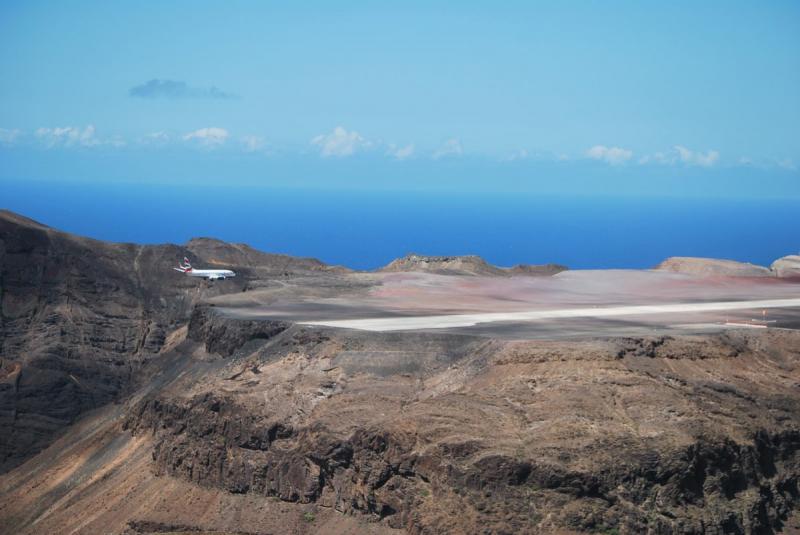
The narrowbody was there as part of an implementation flight to test the route, ground operations and handling ahead of the start of commercial services.
The concerns around wind shear – which had been exacerbated by the problematic landing of the Comair aircraft – further pushed back the opening date for the new gateway.
Following an inspection by the UK CAA on May 10, St Helena Airport was issued with an Aerodrome Certificate, meaning that that the airport infrastructure, aviation security measures and air traffic control service complied with international standards. It did not, however, allow the airport to begin commercial operations.

After some investigation it was found that only southbound landings on Runway 20 had major wind shear problems. The prevailing winds throughout the year, however, favour this runway and as such, aircraft would have to accept a tailwind when landing at the airport most of the time.
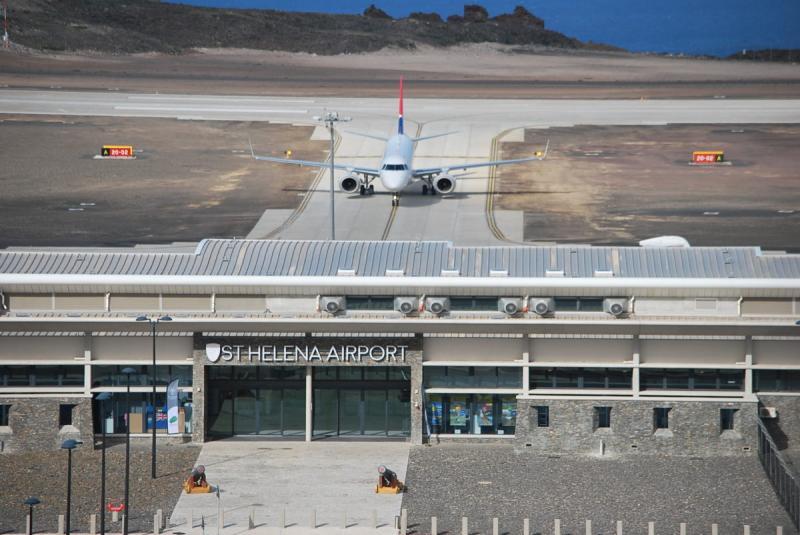
Having a tailwind when landing extends the required distance outside of limits for the runway length and so the size of the aircraft is normally limited to Embraer E190s and Avro RJ100s, but if the wind is favourable, larger jets can land on Runway 20.
Opening
The airport opened in June 2016, but with restrictions for large aircraft due to the dangerous wind shear. This effectively blunted the facility’s ability to operate longer direct flights to destinations including the UK.
The hope was that the airport would allow for a tourism boom, leading to the island becoming more financially self-sustainability and less reliant on the UK aid budget.
In December 2016, the Saint Helena government issued a tender for an airline to establish commercial services to the facility – using the less turbulent northbound landing direction only.
In May the following year, the first commercial connection with paying passengers took place. SA Airlink operated the flight from Cape Town using an Avro RJ85 regional airliner.
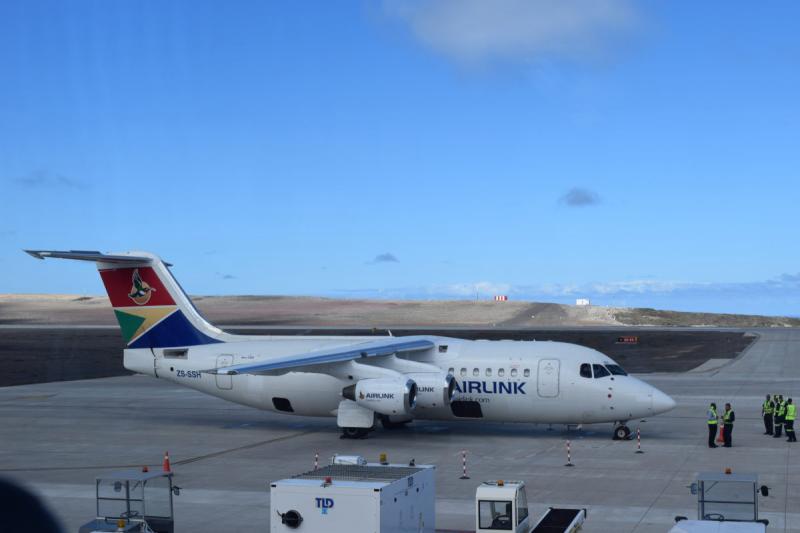
On June 9, 2017 Airlink won the bid to operate scheduled flights to the island and two weeks later it announced weekly services to Johannesburg via Windhoek in Nambia, with a monthly link to Ascension Island.
From October 2017, the airline has successfully operated this service with better than anticipated passenger demand.
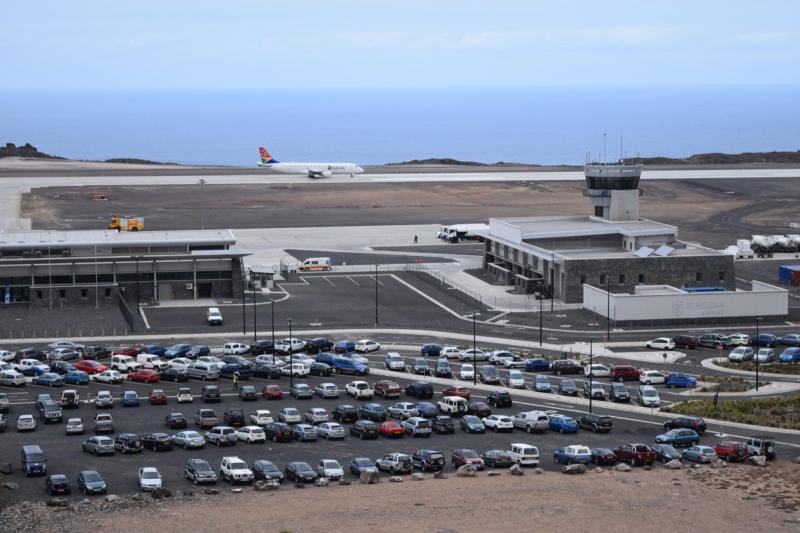
The anticipated boost to tourism has unfortunately been slow to come to fruition. In the 11 months following the start of commercial services around 1,650 passengers arrived by air for a holiday – compared with the 925 who did so via boat the previous year.
Despite its difficulties with the weather, the facility is not as “useless” as it has sometimes been made out to be. It provides a lifeline to the residents of the island who, until its existence, had to take a five-day boat journey to reach the mainland.

